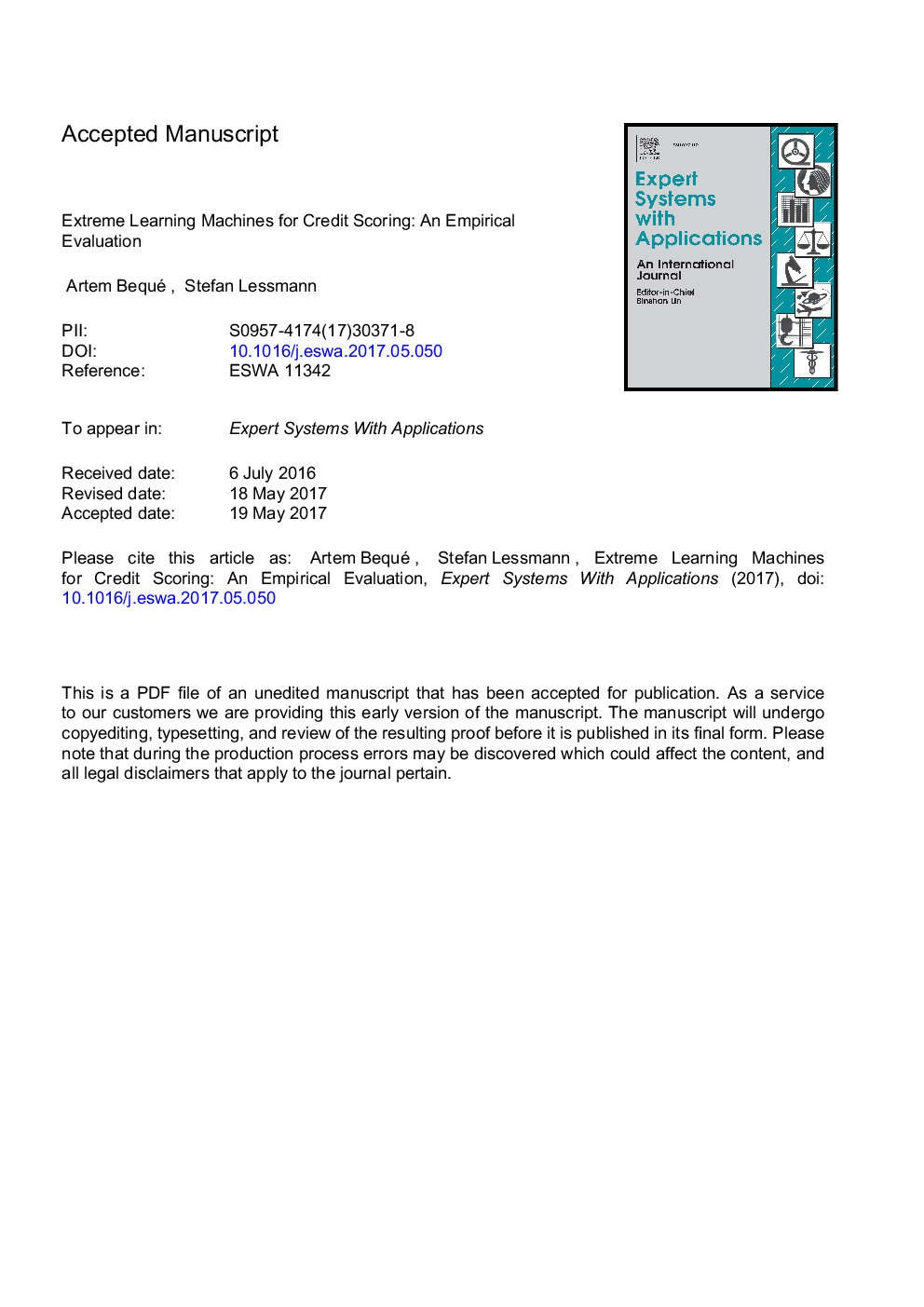| Article ID | Journal | Published Year | Pages | File Type |
|---|---|---|---|---|
| 4943310 | Expert Systems with Applications | 2017 | 36 Pages |
Abstract
Classification algorithms are used in many domains to extract information from data, predict the entry probability of events of interest, and, eventually, support decision making. This paper explores the potential of extreme learning machines (ELM), a recently proposed type of artificial neural network, for consumer credit risk management. ELM possess some interesting properties, which might enable them to improve the quality of model-based decision support. To test this, we empirically compare ELM to established scoring techniques according to three performance criteria: ease of use, resource consumption, and predictive accuracy. The mathematical roots of ELM suggest that they are especially suitable as a base model within ensemble classifiers. Therefore, to obtain a holistic picture of their potential, we assess ELM in isolation and in conjunction with different ensemble frameworks. The empirical results confirm the conceptual advantages of ELM and indicate that they are a valuable alternative to other credit risk modelling methods.
Related Topics
Physical Sciences and Engineering
Computer Science
Artificial Intelligence
Authors
Artem Bequé, Stefan Lessmann,
